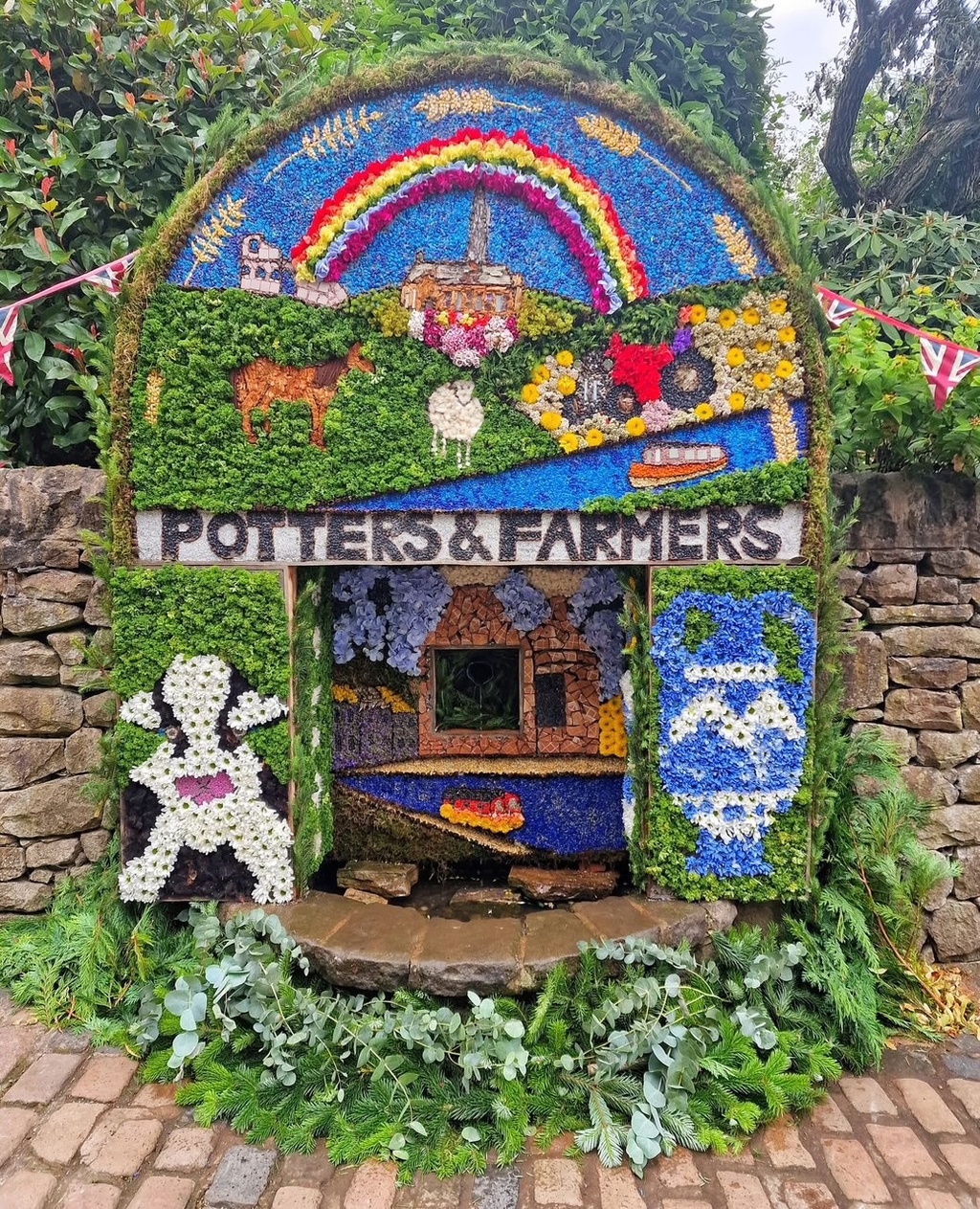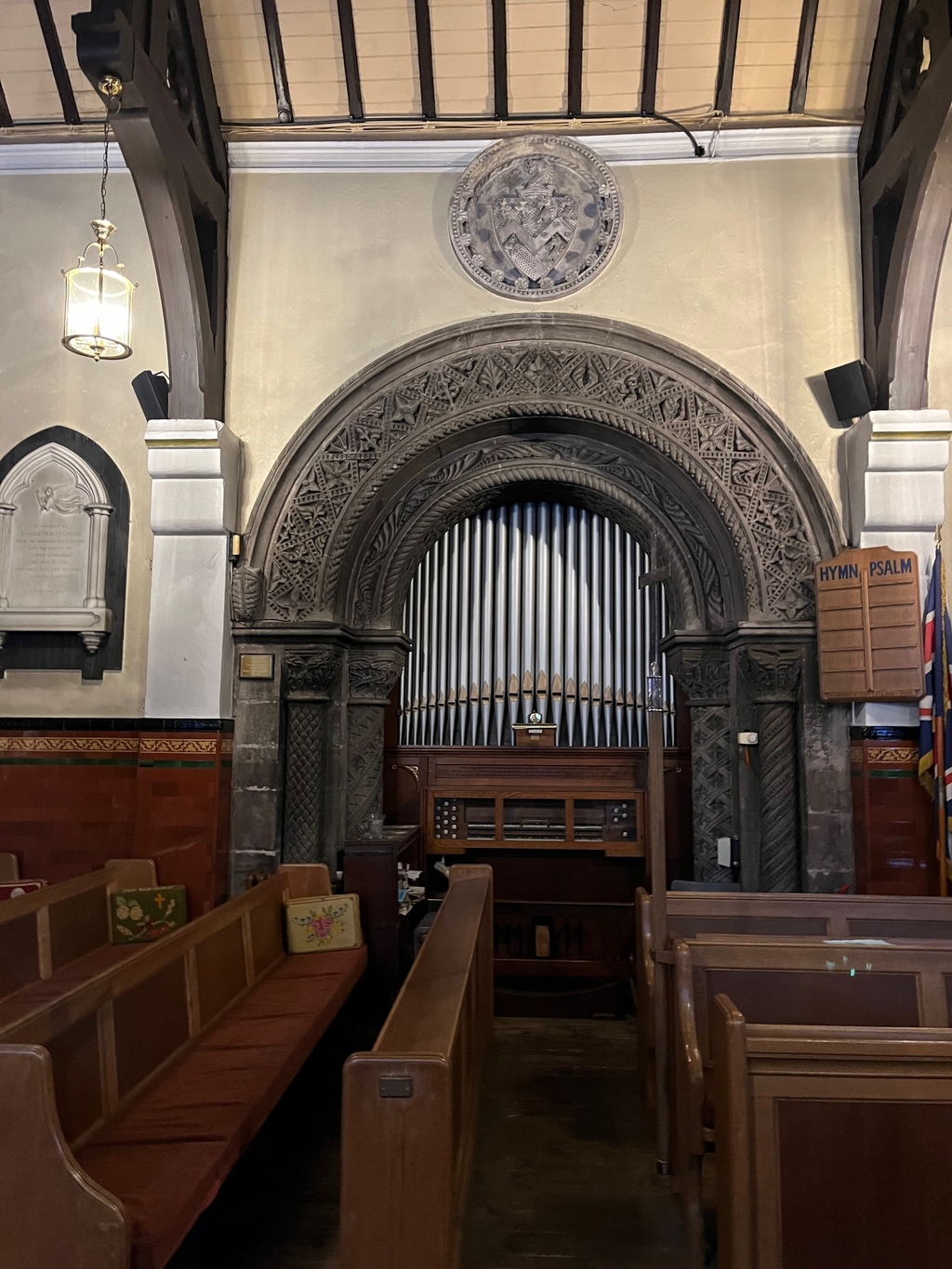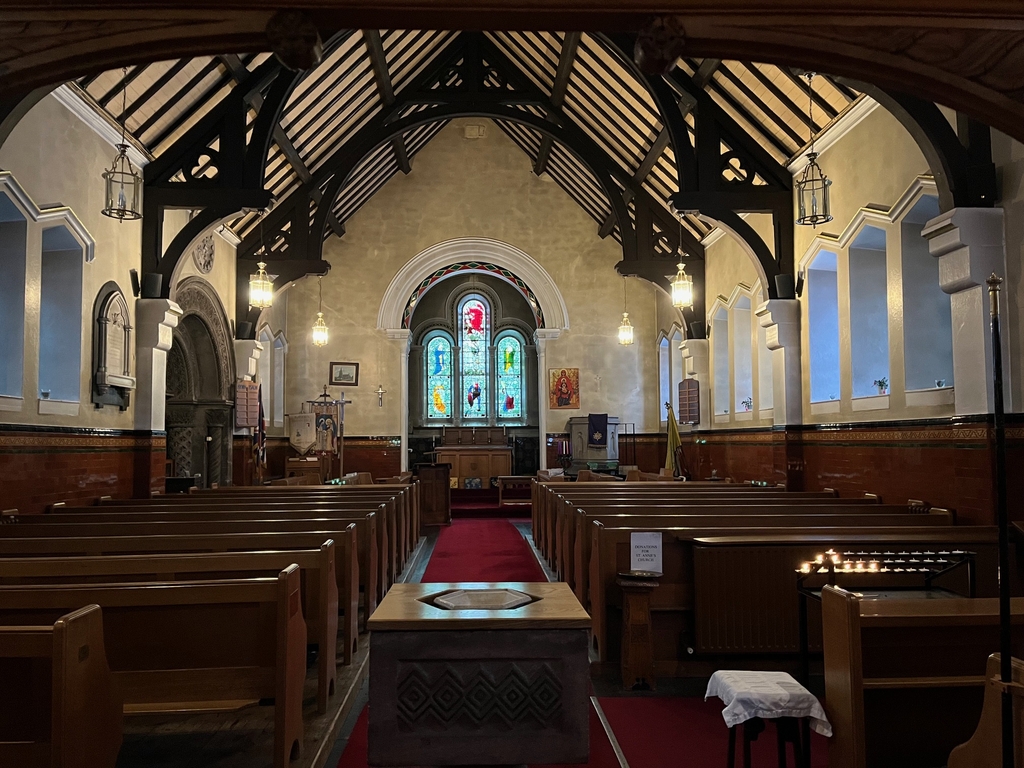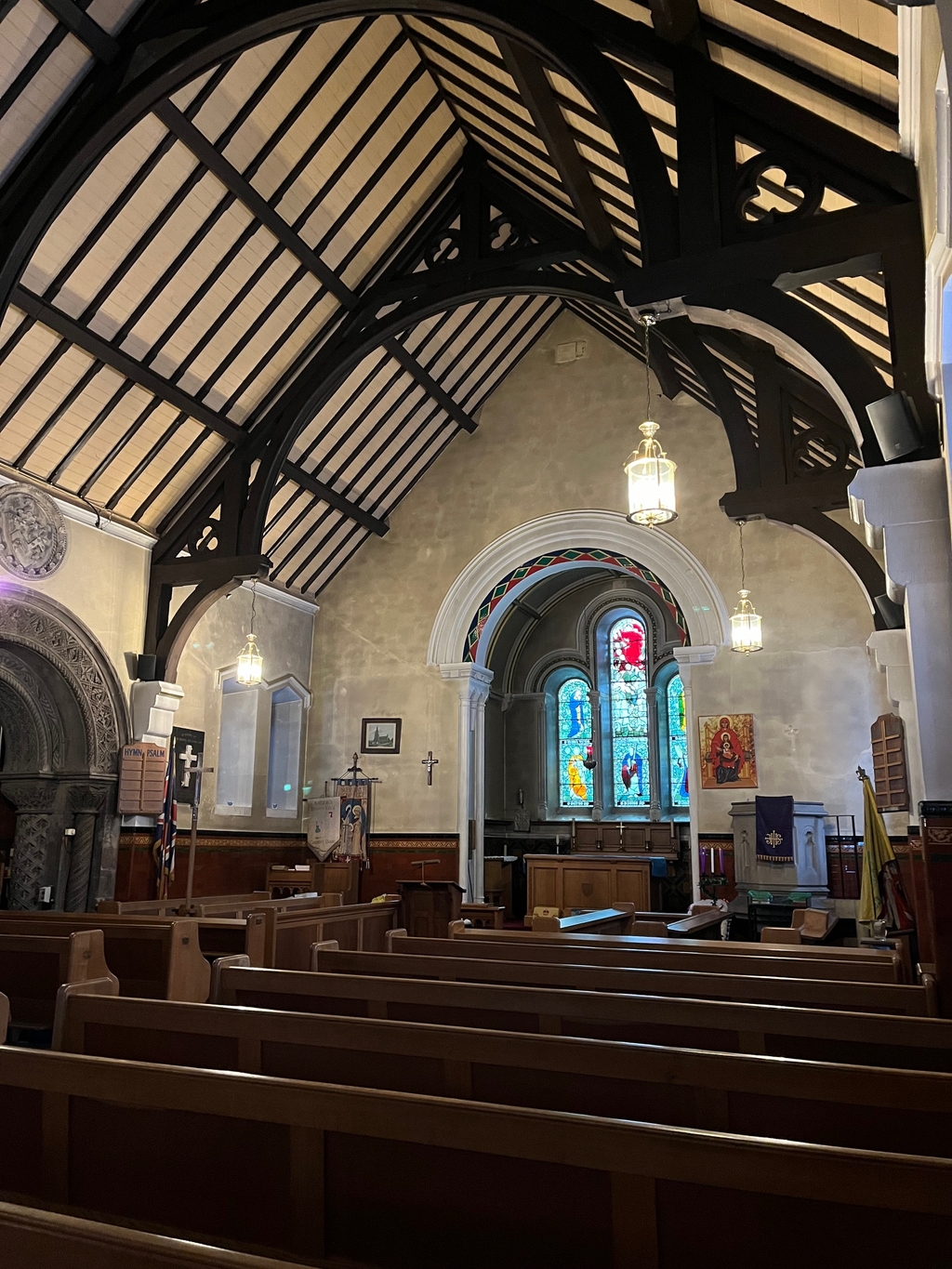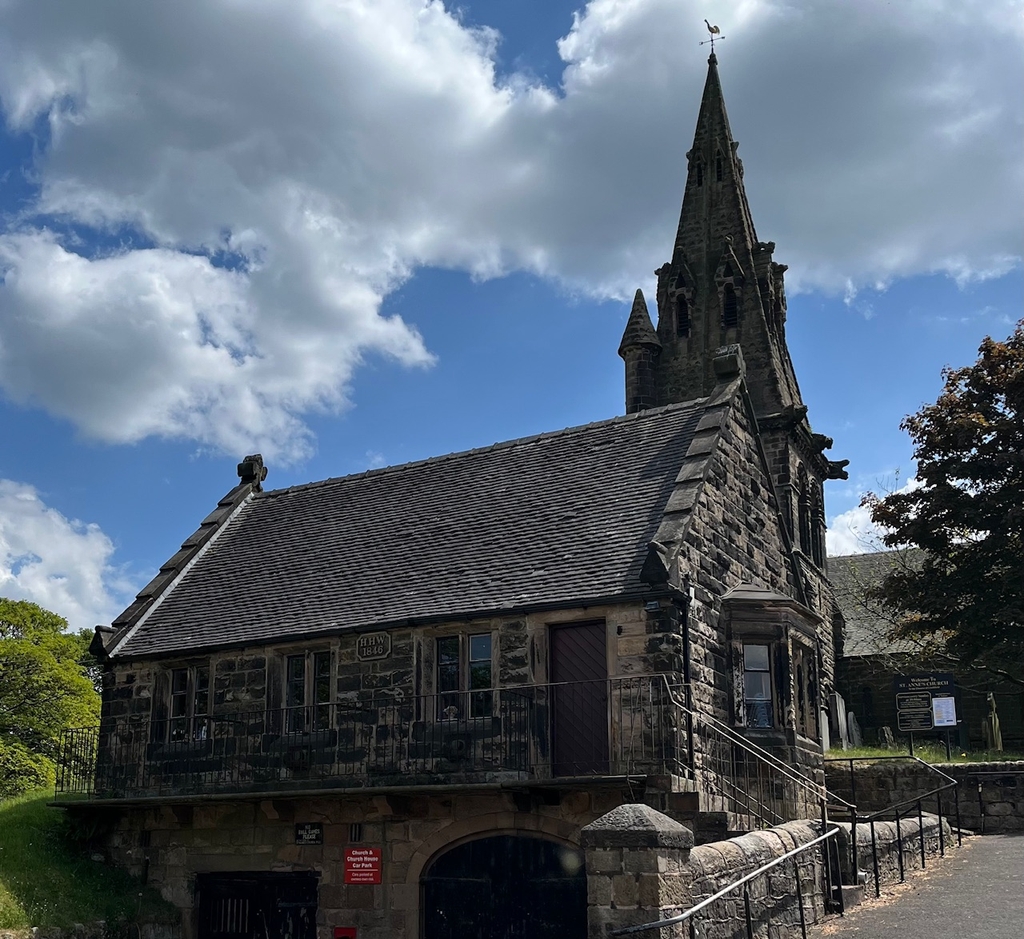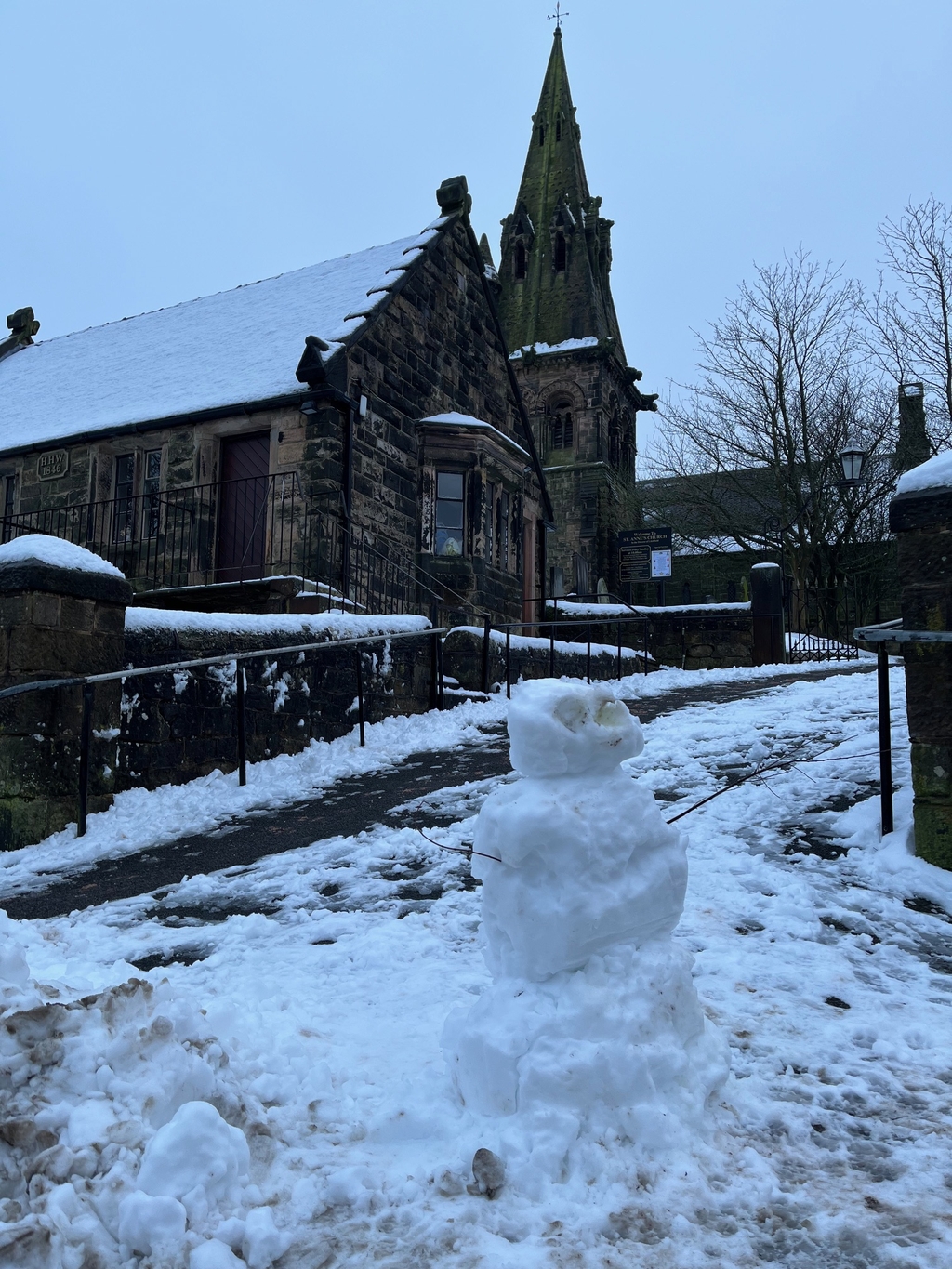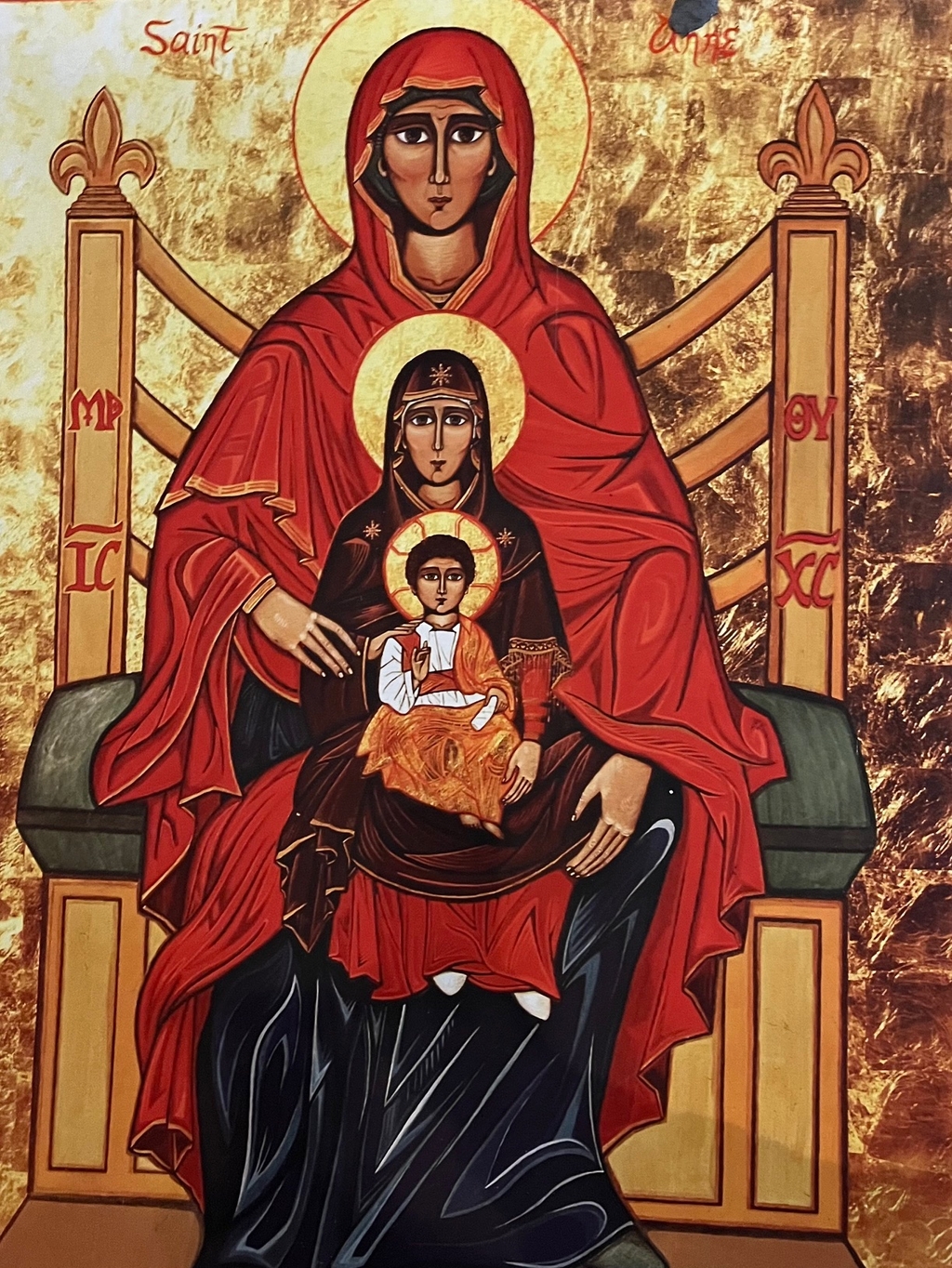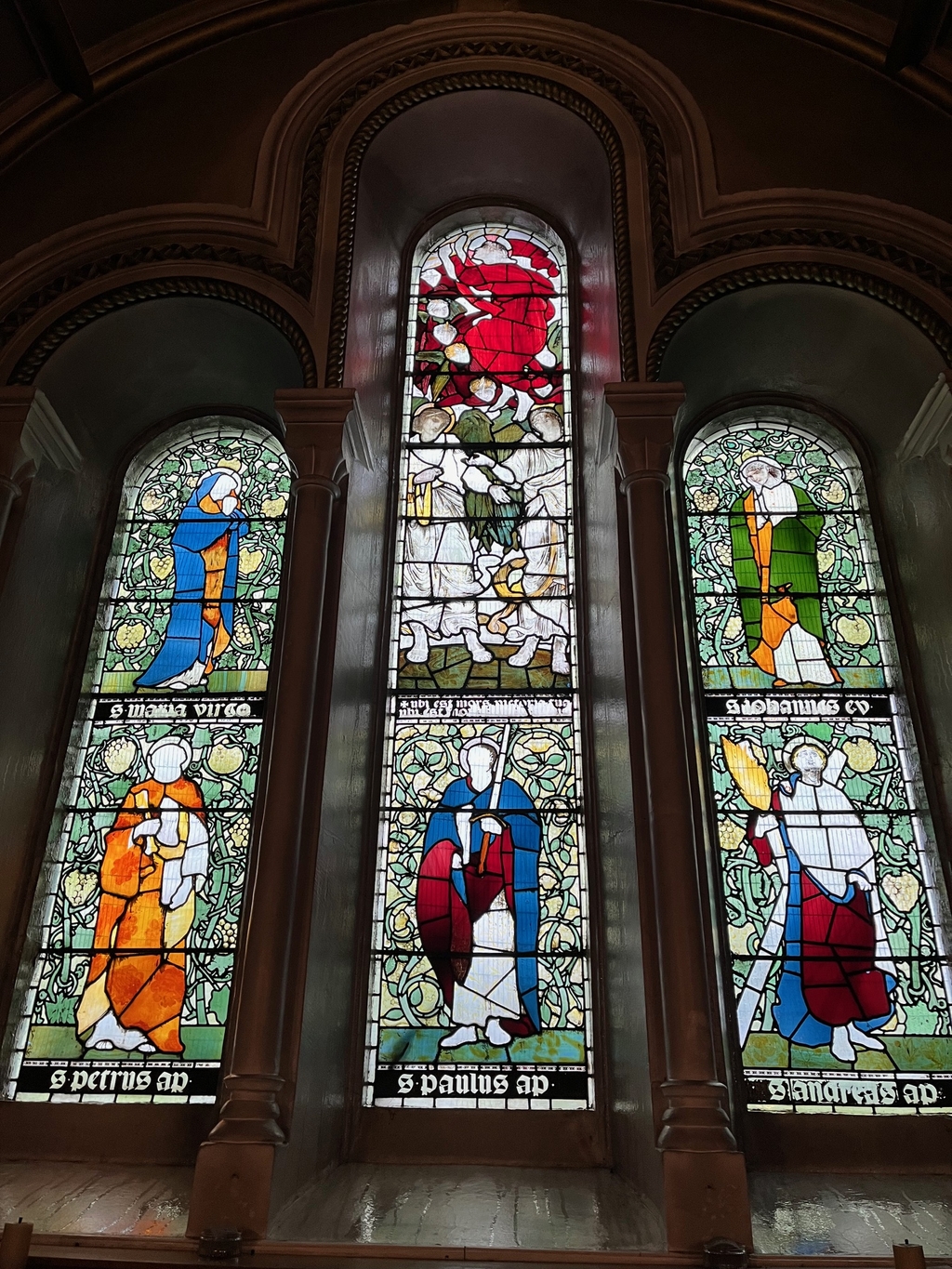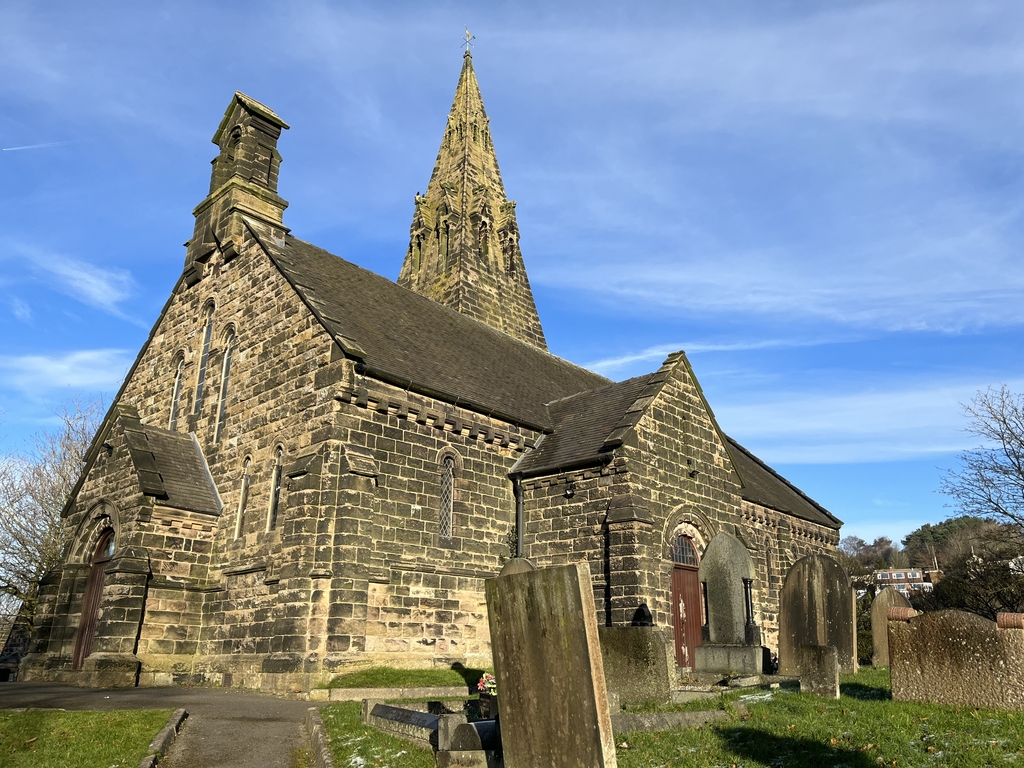In the early 19th century the inhabitants of Brown Edge were miners who worked at Chatterley Whitfield and other mines, a few miles away. The benefactors who gave land for the church, and contributed to its building, included the owners of these mines, notably the mine-owner Hugh Henshall Williamson (1785–1867).
The church, designed by J. C. Trubshaw, was built in 1844, using local stone. It was consecrated on 1 June 1844 by the Bishop of Lichfield, John Lonsdale. The church is dedicated to St Anne, the mother of Mary and the maternal grandmother of Jesus. The patronal festival date is 26th July.
The church is built in local stone with a tile roof, and is in Neo-Norman style. It consists of a nave, a south porch, a chancel, and a northeast steeple, and on the west gable is a bellcote.
The tower, with a spire, was built by Ward and Son in 1854. It is built against the north-east of the church, and is described in the listing text as ‘Iconoclastic Romanesque’. The steeple has a tower with three stages, buttresses, a west doorway, a circular stair turret with a conical roof to the northeast, a zig-zag frieze with grotesque-head corbels, gargoyles, and a square spire with paired lucarnes.
The church is Grade II listed, being designated on 15th December 1986.



